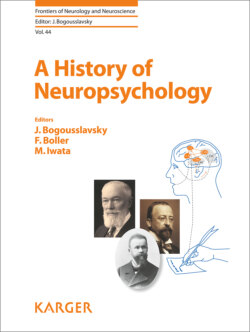Читать книгу A History of Neuropsychology - Группа авторов - Страница 52
На сайте Литреса книга снята с продажи.
The Syndrome of Gogi Aphasia
ОглавлениеAccording to Imura, Gogi aphasia is characterized by 4 features [1]:
The first is difficulty in comprehending the meaning of a sentence spoken to. Although a typical patient could grasp the sound of the sentence correctly, he does not understand what they mean. He would repeat the sentence either automatically or intentionally to grasp the meaning. The most difficult part of a sentence to comprehend is substantive words that have restrictive meaning such as names of object or content.
Second, in spontaneous speech the patient would show word amnesia, verbal paraphasia, and a kind of paragrammatism. The anomia is most prominent for names of concrete things and proper names. Unlike amnesic aphasia, the patient would show difficulty in recognition of the name even if the correct one is produced. Generally, speech is fluent and articulation clear. But sentences produced are incoherent and incomplete. No difficulty is seen in the use of grammatical words.
Third, ability to repeat spoken language is sufficiently preserved. The way the patient repeats cannot be considered as automatic echolalia. It implies his intention for comprehension.
Fourth, there is a unique difficulty in oral reading and writing. Imura summarized this difficulty as “oral reading without comprehension” and “writing without comprehension.” The difficulty manifests itself as a dissociated ability to handle kanji and kana. Kana can be read or written rather easily without comprehension, while kanji is difficult in both comprehension and writing.
Overall, Imura considered this symptom complex belongs to the category of transcortical sensory aphasia in Wernicke-Lichtheim diagram, but nonetheless emphasized its uniqueness because the difficulty is most conspicuous in comprehension of the meaning of substantive words rather than comprehension of spoken language in general and insisted it should be treated as a separate aphasic syndrome.
